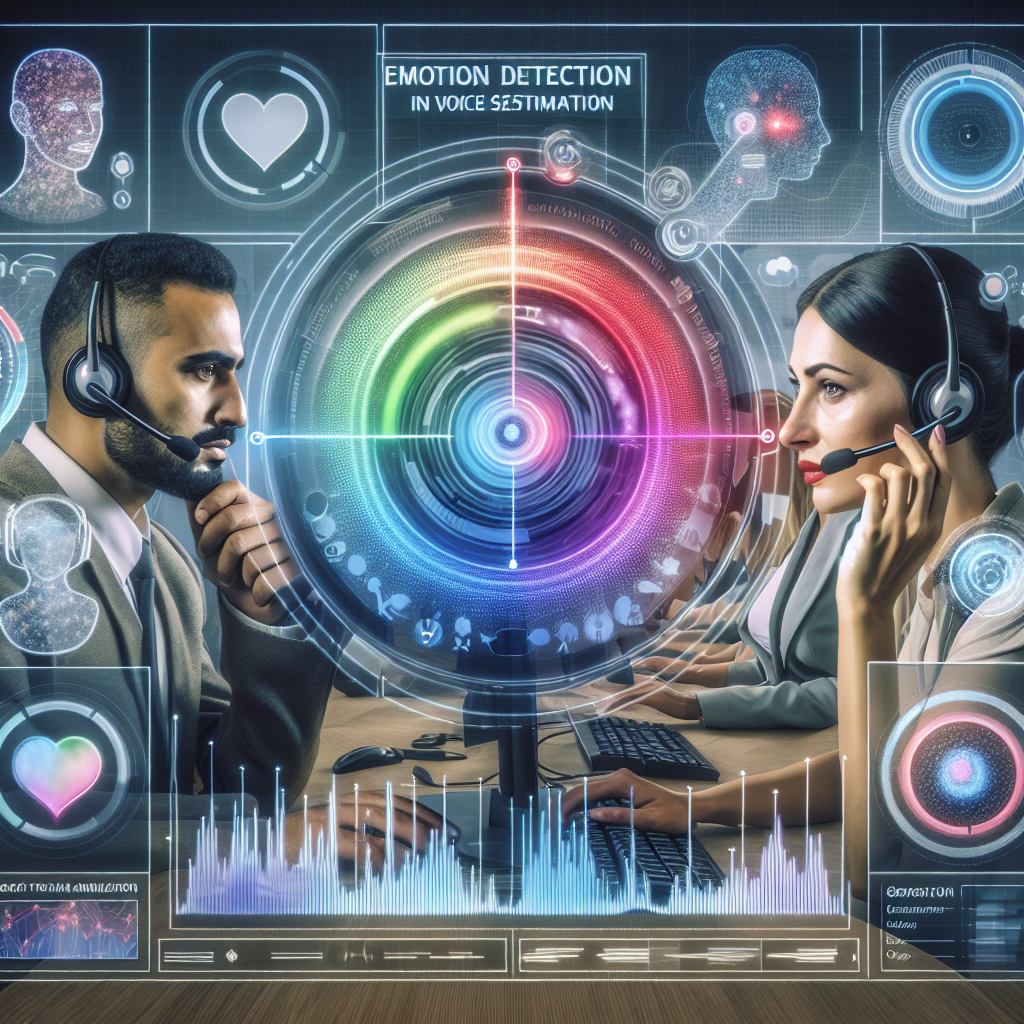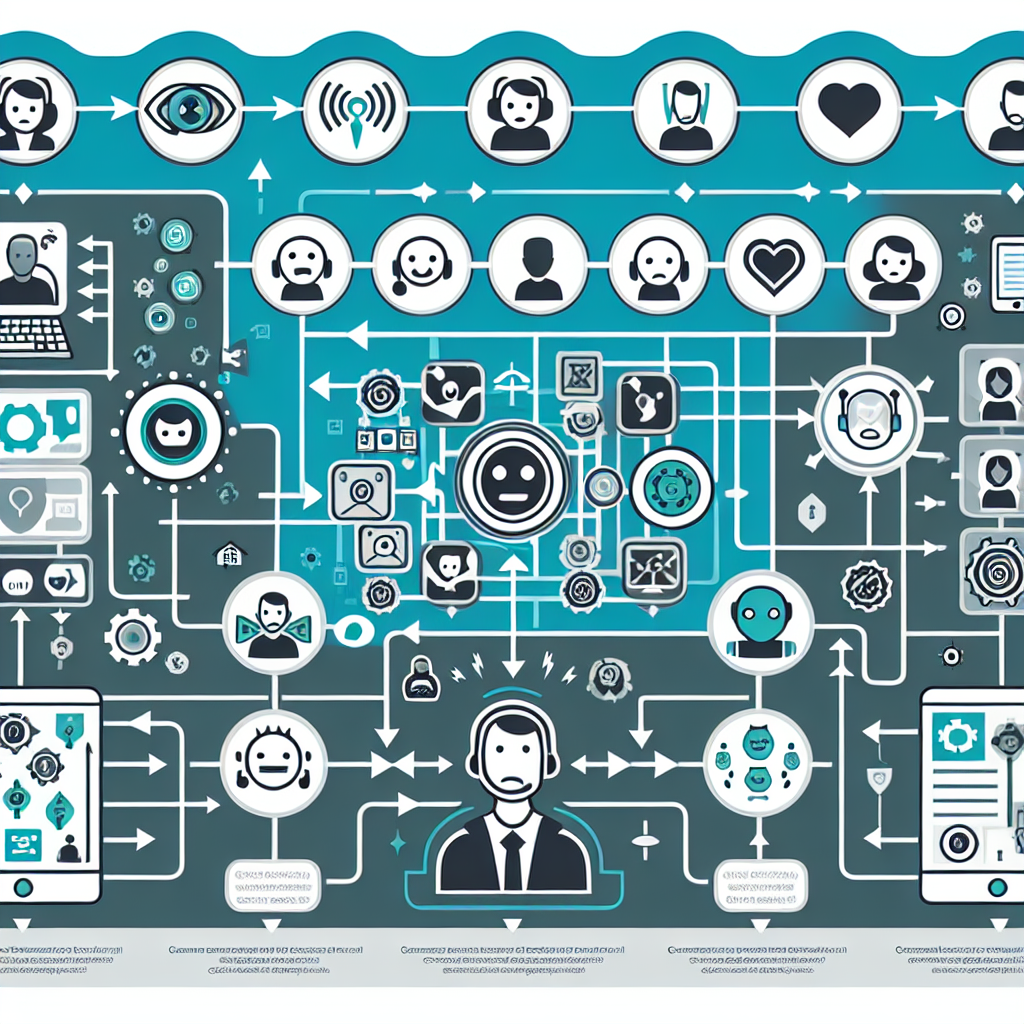
As businesses evolve in the modern era, the use of technology to stay ahead of the curve is crucial. One such innovation adopted in the field of customer service is Emotion Detection Technology. Through the application of advanced Artificial Intelligence (AI) algorithms, this technology is designed to identify and analyze emotional cues in human interaction, particularly customer voice calls.
IBM Watson, for instance, equips its Emotion Analysis to help businesses improve their customer interactions and overall satisfaction.
So, how does this remarkable technology work? Emotion Detection Technology capitalizes on AI-based voice analysis to dissect human interactions. By analyzing factors such as tone, volume, speed, and pitch among other nuanced vocal attributes, AI can determine a user's emotional state – whether they're happy, frustrated, neutral, or upset. This insight is crucial in understanding customer needs and enhancing their interactions with businesses.

With the rise in use of Emotion Detection Technology, customer service efficiency has seen significant improvement. Since businesses can quickly understand their customer's emotional state, they can respond appropriately, ensuring their issues are addressed in a way that will lead to a satisfactory resolution.
Furthermore, this technology does more than just making customers feel understood; it also provides valuable data to the business. The collated information on customer sentiments can help reshape business strategies, improve product quality, and drive customer-centric growth.
If employed appropriately, Emotion Detection Technology can be a powerful tool in bolstering customer satisfaction and loyalty in a rapidly growing and competitive market.
In a world where communication is increasingly digitized, understanding human emotions becomes a challenging task for businesses. There's a burgeoning technology making significant strides in this realm - Emotion Detection in voice calls. Its primary aim is to augment customer interactions, leading to heightened customer satisfaction.
Emotion detection technology's inherent function is to analyze subtle nuances in a customer's voice, thereby discerning their emotional state. Based on this emotion analysis, the technology allows customer service agents to reverse-engineer their responses to better meet the customer's immediate emotional needs. By tailoring responses and offering personalization, there is an increase in customer satisfaction and reduced resolution times.
A case study by call center software company, CallMiner, serves as an exemplar to illustrate the effectiveness of this technology. Emotion detection was used to identify the specific points during the call when customers get frustrated or happy. Understanding the peak points of frustration allowed the company to make necessary changes in their communication methods, reducing customer annoyance effectively. Moreover, identifying happy moments provided insights to replicate these winning strategies across all customer interactions, resulting in improved customer feedback.
Furthermore, another study by Mitel showcased how identifying customer emotions in real-time allowed their team to tailor their responses more effectively. It not only improved their first-call resolution rates but significantly increased overall customer happiness.
In conclusion, Emotion Detection leverages the power of advanced analytics and artificial intelligence, providing businesses with an incredibly effective tool to understand their customers on a deeper, more personal level. This technology speaks volumes in terms of improving customer interactions, an imperative for long-term business-client relationships.
Emotion detection technology is transforming the landscape of customer service. By harnessing the power of Artificial Intelligence and machine learning, businesses can now tap the potential of sentiment analysis to garner deeper communication insights and identify customer sentiments effectively in real time. Yet, proper strategic implementation is critical to leveraging this promising technology for enhancing customer satisfaction.

Begin your journey of adoption with a conscientious understanding of the technical requisites. Opt for emotion detection technologies that are compatible with your existing telephonic systems and have robust built-in signal processing for high audio quality. Furthermore, clear audio is essential for detecting subtle emotional cues from the voice. Therefore, solutions with noise cancellation features are often highly preferred.
Post hardware setup, fine-tune this innovative technology with your unique business requirements via extensive customization. Integrate your Customer Relationship Management (CRM) system with this technology to record, analyze, and track customer calls. This allows you to build a comprehensive, data-backed emotional profile of each customer, ultimately enhancing personalization in customer service and marketing.
The final step towards efficient implementation is a well-structured staff training program. Despite the innovative nature of this technology, its impact is ultimately contingent on how well your employees utilize it. Provide hands-on training to your employees on how to interpret the captured customer sentiments and effectively modify their communication style to meet the customer's emotional state. Companies such as IBM offer professional training and onboarding services to help you make the most of their emotion detection technology.
The integration of emotion detection in voice calls has the potential to revolutionize the business world by creating empathetic dialogues between businesses and customers. Craft an effective implementation strategy and leverage this to maximize customer satisfaction.
The integration of emotion detection technology in voice calls has become revolutionary in several industries such as telecommunications, healthcare, and finance. Its versatility in mastering the adaptation to natural human language and interpreting emotional cues significantly elevates its impact on customer satisfaction.
In the telecommunications industry, emotion detection technology in voice calls helps companies understand their customers better. It aids in enhancing the customer interaction experience by identifying their emotional state during the conversation. The use of this technology mitigates the risk of negative customer feedback and allows enterprises to take proactive steps toward their grievances.
In the field of healthcare, emotion detection goes beyond customer service applications. It comes handy in telepsychiatry, where doctors can detect emotional stress or anxiety in patients’ voices during phone consultations, thereby providing more effective treatments. This groundbreaking application becomes even more crucial considering the potential of voice technology to reach individuals in remote or underserved areas.
Emotion detection shines in the finance sector too. Banks and financial institutions can utilize it to detect stress or nervousness in a customer's voice, which might indicate potential fraudulent activities. It empowers them to resolve issues swiftly and prevent fraudulent transactions, thereby boosting customer trust and loyalty.
From these examples, it is evident that emotion detection in voice calls is becoming an industry standard in enhancing customer satisfaction. Its versatile applications across varied sectors underline its potential as a quintessential tool in the era of digital transformation.
Imagine a world where a machine can understand the emotional context of a conversation just as well as a human does. This is no longer science fiction; we are living on the edge of an era where Emotion Detection in voice calls is rising to prominence. The development of artificial intelligence (AI) now allows decoding of human emotions through voice analytics, taking customer service interactions to a whole new level. The future holds immense potential for emotion detection technology, with several advancements on the horizon that can revolutionize the customer service industry.

One promising advancement is Real-time Emotion Detection. By leveraging AI's capabilities, systems will not only understand emotions, but will also react in real time during a call, tailoring responses based on the customer's emotional state. This proactive approach will improve issue resolution rates, thereby boosting customer satisfaction.
Another forthcoming trend predicts the amalgamation of emotion detection with chatbot technology. This synergistic combination aims to attain a nuanced understanding of customer sentiment, expediting issue resolution while personalizing the customer experience. Additionally, chatbots with emotion detection may also help identify emotionally charged conversations that demand an escalation to human operators.
Beyond customer service, the technology is predicted to expand into various other sectors like healthcare, HR, and marketing to name a few. Emotion AI will become a standard tool, with its human-like understanding of emotions bridging the gap between AI and human interactions.
Indeed, the future of Emotion Detection promises a transformative shift that can redefine how business relations are constructed, maintained, and nurtured. And while the technology is still in a nascent stage, the strides it has made so far assert that we are on the path to creating a more empathetic AI.
While the use of emotion detection in voice calls can significantly enhance customer satisfaction, it comes with its share of challenges and ethical considerations. One of these challenges is accurately interpreting emotions expressed in speech patterns. This is because emotions are intricate and multifaceted, and different individuals express them in uniquely different ways. In addition, vocal nuances like pitch, tone, and volume can greatly affect speech interpretation. Recent studies have shown that even the most sophisticated emotion AI technologies may struggle with dealing with this aspect of emotion detection. This implies that some genuine emotions may go unchecked, thereby compromising the customer experience.
Another area of concern with emotion detection technology in voice calls is the valid ethical concerns associated with privacy. With this technology, companies have the power to analyze, interpret, store, and use emotional data from their customers. There's the risk that this could amount to invasion of privacy. The European Union’s General Data Protection Regulation (GDPR) has identified emotional data as personal, sensitive information that needs to be protected. It's therefore essential for businesses to fully inform customers about how their data will be used and to obtain express consent before collecting their emotional information.
Faced with these challenges and ethical considerations, businesses should approach emotion detection applications with maximum care. Successful deployment of this technology is dependent on AI accuracy, respect for customer privacy rights, and regulatory compliance. By addressing these potential issues head-on, businesses can ultimately benefit from the opportunity to foster superior customer relationships through understanding and responding to their customers’ emotions.
Start your free trial for My AI Front Desk today, it takes minutes to setup!








